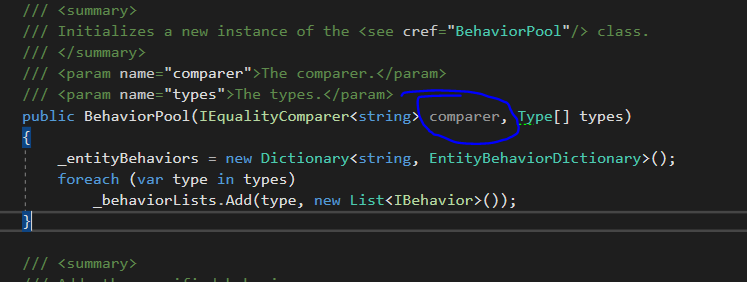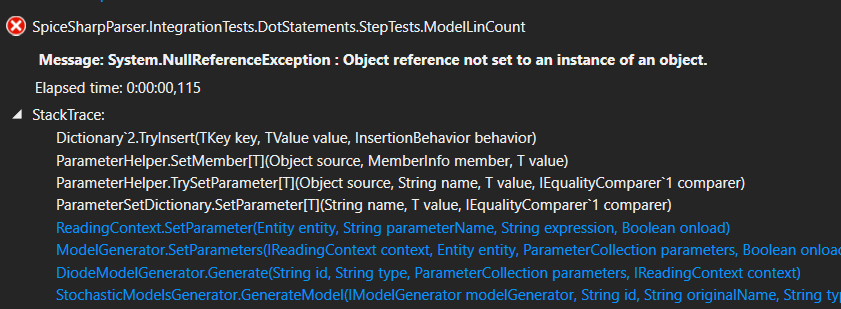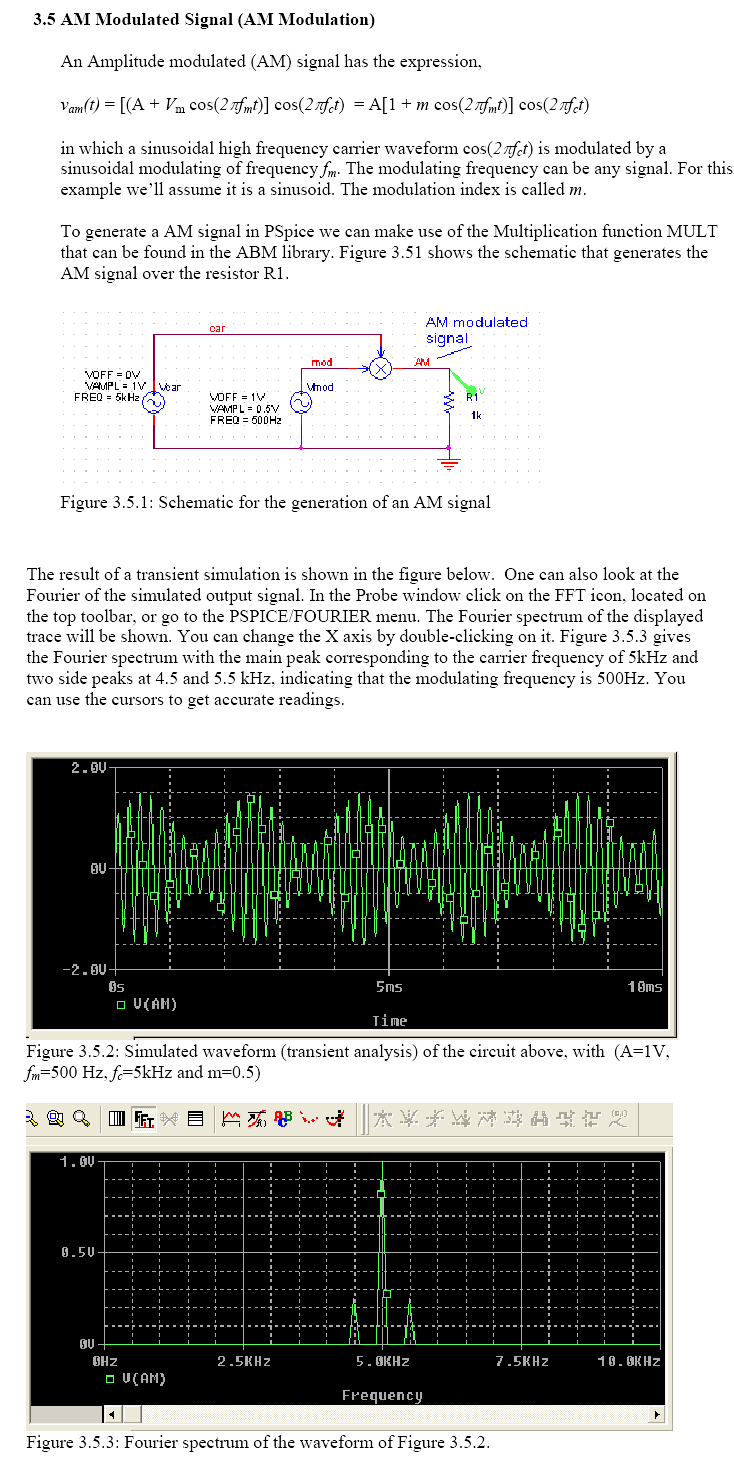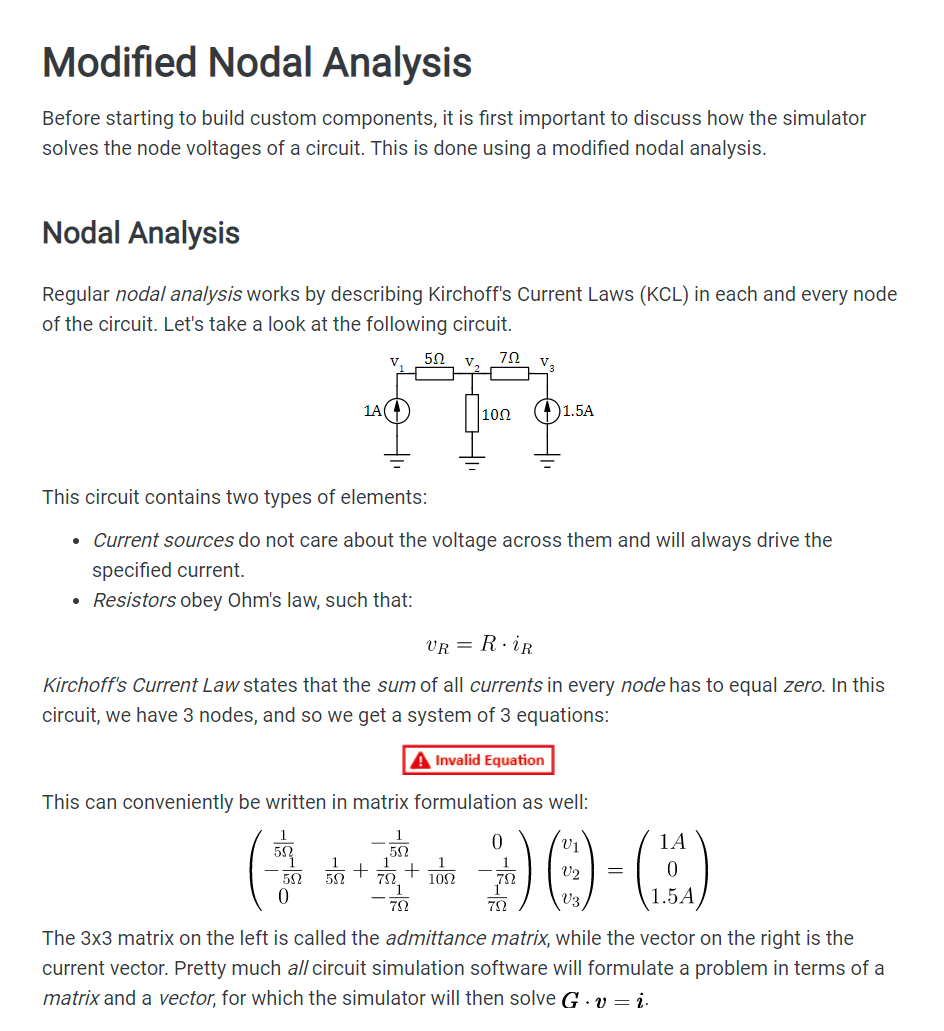Spice# is a Spice circuit simulator written in C#. The framework is made to be compatible with the original Berkeley Spice simulator, but bugs have been squashed and features can and will probably will be added.
You can find documentation at https://spicesharp.github.io/SpiceSharp/. There you can find a guide for getting started, as well as more information about:
- Supported types of analysis.
- The general structure of Spice#.
- A tutorial on how to implement your own custom model equations (prerequisite knowledge needed).
- An example of changing parameters during simulation.
- etc.
Simulating a circuit is relatively straightforward. For example:
using System;
using SpiceSharp;
using SpiceSharp.Components;
using SpiceSharp.Simulations;
namespace SpiceSimulation
{
class Program
{
static void Main(string[] args)
{
// Build the circuit
var ckt = new Circuit(
new VoltageSource("V1", "in", "0", 0.0),
new Resistor("R1", "in", "out", 1.0e3),
new Resistor("R2", "out", "0", 2.0e3)
);
// Create a DC sweep and register to the event for exporting simulation data
var dc = new DC("dc", "V1", 0.0, 5.0, 0.001);
dc.ExportSimulationData += (sender, exportDataEventArgs) =>
{
Console.WriteLine(exportDataEventArgs.GetVoltage("out"));
};
// Run the simulation
dc.Run(ckt);
}
}
}Most standard Spice-components are available, and building your own custom components is also possible!
Spice# is available as a NuGet Package.
| Status | |
|---|---|
| Windows | |
| MacOS | |
| Linux/Ubuntu |
Spice# aims to be:
- A Library rather than a standalone piece of software like most simulators currently are.
- Accessible for both the amateur and advanced electronics enthusiast (and perhaps professional designer). In order to decrease the hurdle, a Spice# parser is also being developed. This also includes it being cross-platform (.NET and Mono).
- Compatible with the original Spice 3f5 software (without the bugs). There's a reason why this has become the industry standard.
- Customizable with custom simulations, custom models, integration methods, solver, etc.
- Performance, but still completely managed code. Nobody wants a slow simulator.
Having been implemented in the .NET framework does have some limitations:
- Unmanaged C/C++ code can often be optimized more than managed code.
- Spice# uses Reflection to give you a better experience. However if you decide to use reflection, you may feel some performance hit.







